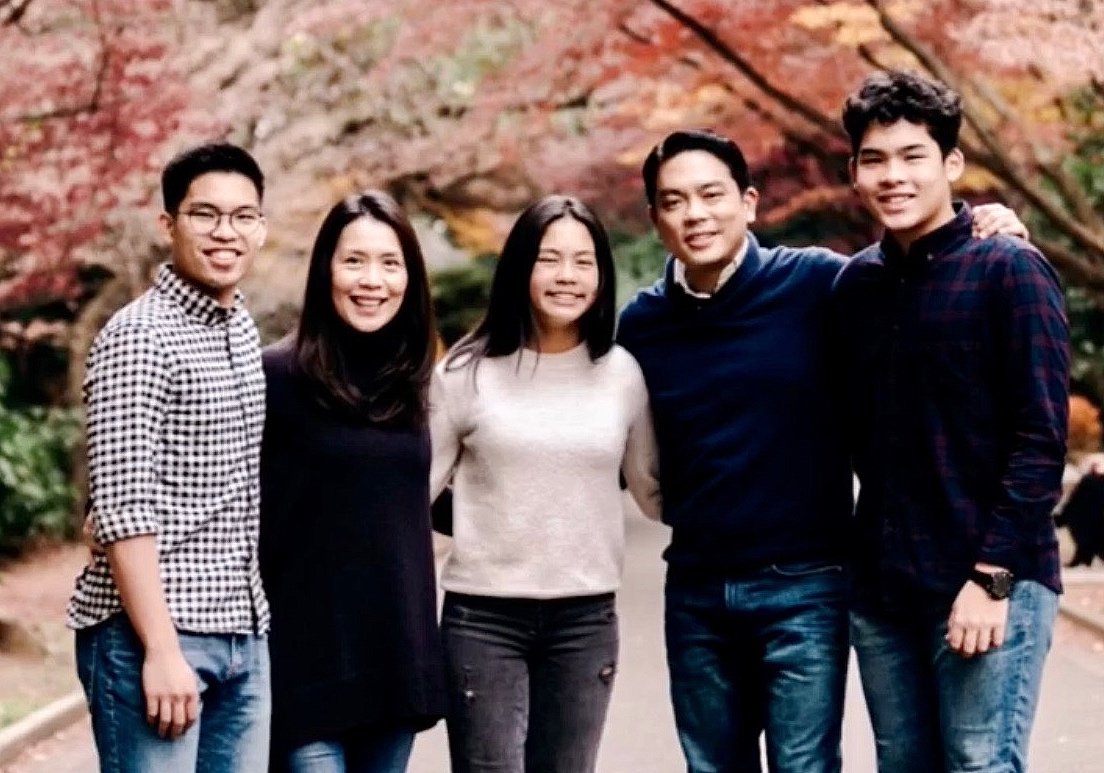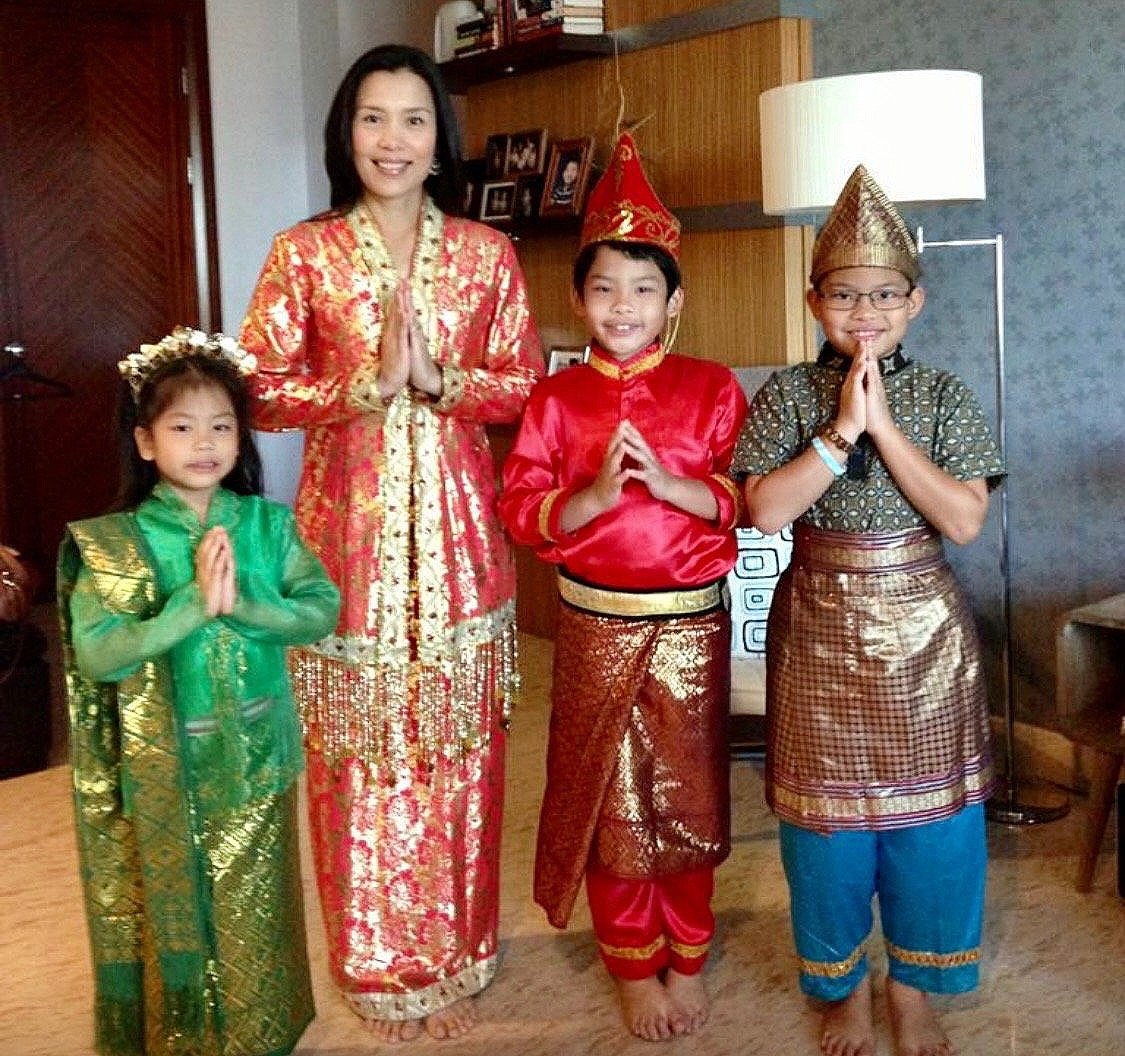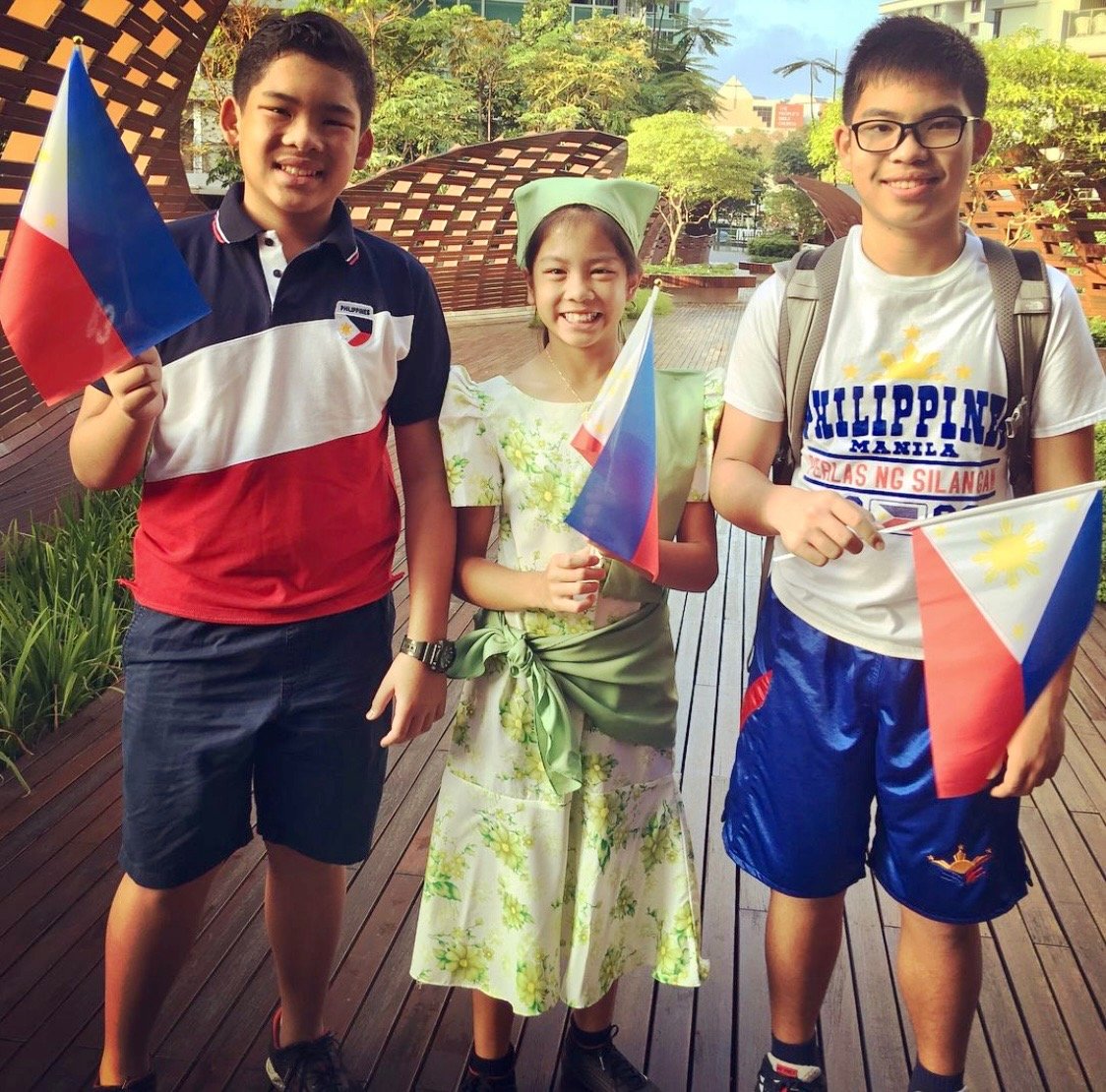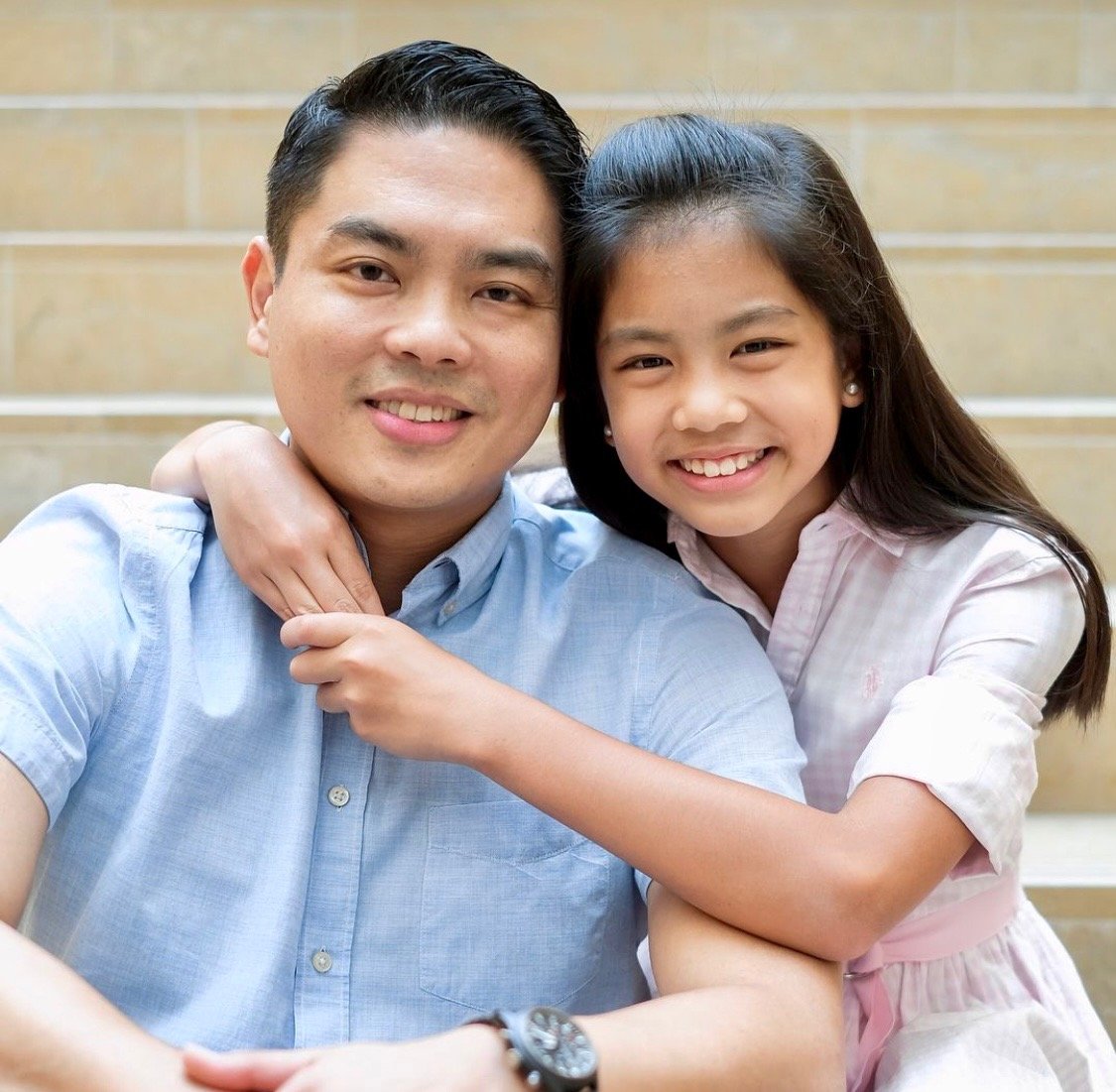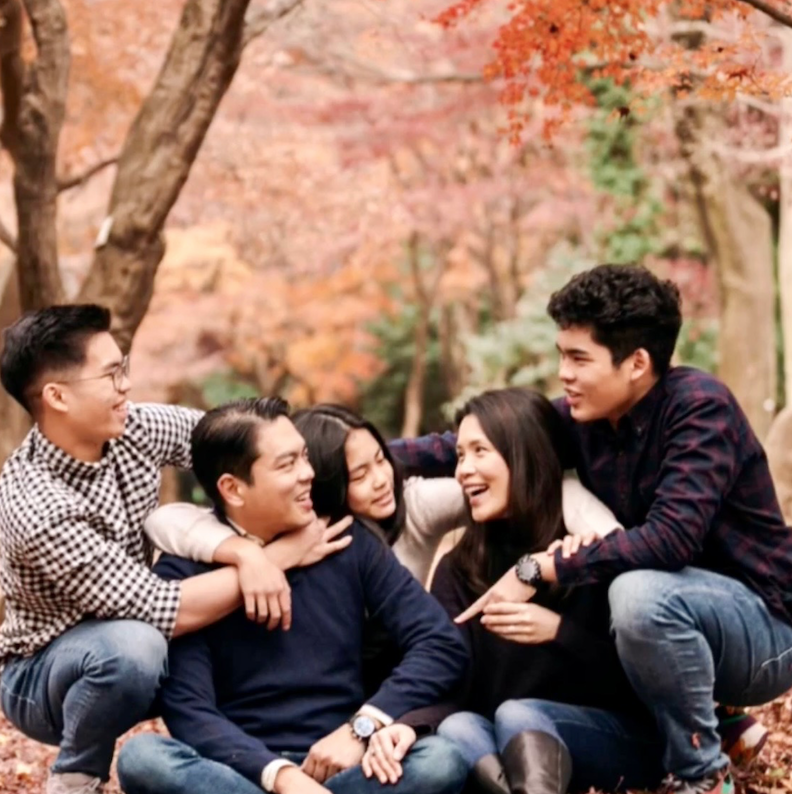Moving In. Moving On.
Reboot and Reframe aren’t mere jargon to Lia Padilla-Medalla. The mother of three reflects on life as they move in and move on in three adopted cities the family relocated to. From Manila to Jakarta and from Singapore to Tokyo, she had to restart and re-address their nomadic life in the past 13 years.
After dealing with the tears and fears, the family emerged stronger and closer each time. The location-dependent enriching experiences transformed them into adventurous travellers, arts and culture enthusiasts, and itinerant foodies.
“It was almost as if without travelling the world, the world came to us,” as Lia succinctly frames it.
The relocations were due to her husband’s job assignments, coinciding with the kids’ crucial developmental ages: as preschoolers, as pre-teens and as teenagers. Being a paediatrician Lia knows too well the impact of these transitions.
As the kids were in their formative years, full-time motherhood was busy with the socio-emotional and behavioural aspects that, on one hand, get so challenging that Lia missed the stability of clinic practice. On the other hand, being physically and emotionally available, getting to know her kids closely and supporting their interests give her fulfilment beyond measure.
In retrospect, Lia shares with Weekly Sparks what a transitory nomadic living is like.
When my husband told me about the Jakarta job opportunity, I faced a crossroad that made me pause. I was just starting to have a fulfilling career as a Paediatrician. I had known nothing other than the reality of my vocation – taking care of other children most of the time before my own. I was a part-time mother who, fortunately, had the support of our family in caring for our children. I had to confront the uncharted notion of leaving it and become a full-time mother in a foreign land.
Our kids were only 5, 4 and 2 years old when we uprooted them from our hometown, Manila. We had never been to Jakarta. Our first impression was that of strange familiarity. The weather, lifestyle and people were similar to Manila except we didn’t know anyone.
The kids started their formal education in Jakarta, in one of the oldest international schools in the region founded 70 years ago to provide an English-speaking school to children of UN expatriates. The mission evolved to provide what today is the dynamic kind of international education facilitated by globalisation. The campus of 500 students quickly became their second home, nurtured by a caring, diverse and inclusive community as we interacted with multi-ethnic families more experienced in living many years away from home.
At school, our kids joined in celebrating a classmate’s religious or cultural holiday they never heard of before, eagerly shared about their own Filipino culture and beliefs, learned to respect the rules, expectations and food unique to every home at playdates, and made friendships regardless of language, race or culture. I learned from their experiences as much as from my own interactions.
After learning to navigate the ups and downs, including many third-world issues in the Big Durian, we ventured to learn more through food, markets and sightseeing the local way. We picked up some Bahasa Indonesia (luckily, pronunciation and structure are similar to Tagalog), which connected us and endeared the kid to the locals. Soon after, we went beyond the city to explore the stunning countryside rich in culture and history.
Five years quickly went by. We sadly announced to the kids that our chapter in Jakarta had come to an end. The news was met with tears. My heart went out to the kids who were in various levels of sadness and stress. I knew they were looking back at what they were losing and so was I, but also, together with my husband, I was anxiously looking toward the unknown – finding a school, home and settling in a new environment best fit for the family. Looking back, it was listening and communicating that kept us in the same rhythm during the stressful transition.
Next stop was Singapore. Starting over as pre-teens in the island-city proved more challenging than as preschoolers in Jakarta. It took resilience to adapt to the culture while learning the nuances of blending into a school of 2,000 students. For a few weeks, we clung to each other and shared daily challenges.
I was on edge waiting to hear their stories from school. There were heartbreaks here and there but also breakthroughs in making new friends, joining a new club or a new team. At their own pace, each one found their social circle and the kind of activities that made them happy.
The Little Red Dot was a safe and clean city where the kids enjoyed school, home, parks and museums within a short distance from one another. English is widely spoken and information on public and private services are easily accessible online.
After finding the right school and an apartment nearby, we were physically settled. Only 50 kms North to South and 27 kms East to West, we enjoyed getting around school, home, malls, museums, zoos and parks easily. As a melting pot of Chinese, Malay and Indian ethnicities, we were immersed in its vibrant arts, culture and food scenes in no time.
The family-friendly environment gave our kids an independence they enjoyed for the first time – being able to walk or take public transportation, attend activities and meet friends on their own. This allowed them some freedom to make choices, advocate for themselves, and learn from mistakes, most often in the company of friends through which they created memories and close friendships.
Participating in youth sports, which they loved, demanded a high level of engagement, effort and discipline. Training and tournaments filled much of the time after school and on weekends. This brought us closer to multi-national families living in Singapore whose kids joined the same teams.
At this stage, home life was fraught with emotional, physical and hormonal changes, while outside the home the culture was fast-paced and competitive. We found a busy routine between home, school and weekend activities with our pre-teens growing in self-reliance but still completely dependent on our emotional support. I remember them telling me about middle school year-end assemblies. They were meant to seal memories and understand bittersweet emotions during which the school body recognised “leavers” and “stayers” – labels given to transient expat kids. They said that every year, they felt sad for the “leavers” but relieved that they were “stayers”.
And so I dreaded that day, five years later, when we had to tell the kids of our next move. Sad and stressed in various degrees, our teens this time asked questions and participated in planning. I appreciated their awareness of movement and globalisation. The older ones, through social media, were connected with friends from Jakarta and Singapore who are all over the world. There was some optimism about staying connected but the stress of leaving friends and home was unavoidable.
Moving teenagers would have been more turbulent if not for our next destination: Tokyo. Our visit to Tokyo in the spring two years before was one of our most memorable holidays. It was a dream for them to live there one day. Nevertheless, it did not diminish the sadness of missing friends, the life they left behind and the anxiety of starting over.
Japan’s kinship culture was striking. A caring, supportive close-knit community welcomed us at our school. Students reached out to our kids on social media, offering to help or answering questions even before the school year began. They settled into the new pace and rhythm sooner than I expected. They manage their emotional and physical transition on their own. I immediately saw a different kind of self-reliance, a trait that is imbibed in Japanese children from a very young age.
One of the first adjustments was the long commute on the rush hour trains travelling 50 minutes one way and changing lines in between, as compared to the 10-minute seated bus ride in Singapore. They settled into this routine quite easily with new friends who hopped on and travelled with them, making the trip a part of their social life.
I, too, received the same support from the warm parent community, making new friends and sharing experiences about living in Japan.
Excited as I was to explore one of the most fascinating societies in the world, I was overwhelmed by a myriad of obstacles due mainly to language. Without the Japanese language, services, products and experiences are limited to where foreigners could be accommodated.
Then there is a world of etiquette and rules that impinges on daily life such as eating, commuting, using electronic devices, behaving in public, showing respect, apologising, expressing gratitude and so on. The Land of the Rising Sun turned out to be the Land of Rules, many of which I would learn through trial and error. We had to quickly immerse ourselves in the local way of life such as Japanizing our English, flocking daily to the convenience stores (konbini), appreciating the seasons for nature and food as well as regional produce, art and craft and so on.
Five months into our stay, we watched the pandemic change the city’s vibe as tourism came to a halt and social distancing restrictions were put in effect. But there was a silver lining. We explored Japan without competing with millions of tourists. We took short trips to satiate our appetites for adventure, food, art and culture. Every small progress in learning the language, every personal encounter, every experience gave us a deeper insight into our host country, each time inspired by what we saw and what we felt.
There’s still so much more to discover about ourselves in Japan. We don’t know when or where the next move will be, but I’m certain we can make the most of it by adapting and being resilient.
(L-R: Luis, dad Sunny, Anna, mom Lia and Tomas)
If you ask our third culture kids which of the countries we lived they would call home, they’d say all and none. Belonging, it seems, has less to do with the places we’ve lived in. Rather it’s formed by the memories, ideas, passion and relationships we’ve collected over the years.
Lia Padilla-Medalla, MD | guest contributor | ws

